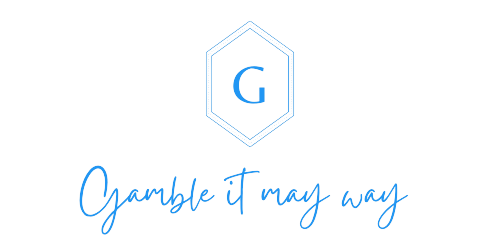
Table of Contents
ToggleIf you’ve never heard of Pride Month 2022, it’s a great opportunity to learn about the history of the Lesbian, Gay, Bisexual, Transgender, and Queer (LGBTQ) movement. Also, you can learn about the Stonewall Riots. Learn about the colors of rainbow flags and upcoming Marches in New York City.
What Is Pride Month?
During June, we celebrate the empowering history of LGBTQ people, and what is Pride Month 2022? Activists and social reformers like Marsha P. Johnson, Sylvia Rivera, and Miss Major Griffin-Gracey introduced this movement. These community organizers had fought unjust treatment and advocated for legal reform before Stonewall. Today, Pride events and marches are a chance to register gay and lesbian people to vote, promote equality, and make a stand on issues like HIV/AIDS.
In 1978, the Stonewall Riots in New York City changed the course of history. As a result, the LGBTQ community has seen a resurgence of activism and visibility.
Who Celebrates Pride Month And Why?
Many straights and heterosexuals also celebrate the LGBT community. But if you’re new to the Pride movement, you might wonder who celebrates Pride Month 2022 and why. It’s important to understand your community’s history, and who celebrates it the most.
The LGBTQ community traditionally celebrates Pride. This group includes individuals who identify as gay, lesbian, bisexual, or transgender, as well as their allies. However, the term “LGBT” also includes people whose sex is not clear intersex, and asexual. People who identify as LGBT should take pride in October.
New York City’s Stonewall Inn was a landmark in the history of gay rights. Police raided this long-standing gay bar on June 28, 1969. As a result, many patrons began resisting arrest and throwing bottles at the officers. The result was a riot that lasted three days. Since then, LGBTQ+ groups have continued to gather on this day to march and advocate for equal rights for all.
What Is The Origin Of The Name “Pride”?
Brenda Howard dubbed the “Mother of Pride,” organized the first LGBTQ Pride March and a week of activities surrounding it. Her efforts established the basis for Pride Weeks all over the world.
Artist Gilbert Baker designed the rainbow flag. The colors of the rainbow signify six of the six basic human elements. The first Pride march included the rainbow flag, which later expanded to include an eight-colored one, featuring hot pink and turquoise as symbols of sex and magic, respectively. These days, the rainbow flag is the official pride flag of the LGBTQIA+ community.
The riots that began on June 28, 1969, galvanized the LGBTQ community and spurred greater political activism. Today, many LGBTQ people celebrate Stonewall Day on June 28, the first anniversary of the Stonewall riots. A parade at Stonewall commemorates the event, and the riots at the Stonewall Inn were the catalyst for the evolution of Pride. The event became a chance to rally the LGBTQ community for more equality.
The word pride has been associated with gay people since the beginning of the LGBT movement. While it does not have the same connotations as a Pride parade, it is used to denote an LGBT community’s sense of self-awareness. It has also lent its name to LGBT-themed organizations, institutes, foundations, and cable television stations. And it is the word pride that makes gay communities proud.
The Origin Of The Rainbow Flag
The rainbow flag is an LGBT symbol, but what’s its history? The first known example of the flag is a hand-stitched version that was designed by Gilbert Baker. His friends hand-dyed it and stitched it together. This version was thought lost for 40 years, but it was recently discovered. It is the only surviving piece of the inaugural rainbow flag. Despite being almost four decades old, this original flag has been viewed by millions around the world.
The first rainbow flag was designed by Gilbert Baker in 1978 in response to an activist call in San Francisco. The flag features eight stripes, instead of the five traditional colors used by the “Flag of the Race.” Baker chose colors that represented life, sexuality, and healing. He dyed the original material himself, making it an even more symbolic symbol of equality than the pink triangle. Baker’s design has become a universal symbol for all LGBT people.
Can One Participate In Pride Events If He Is Not LGBTQ?
When asked if one can participate in Pride events, the response varies greatly depending on the type of event. Some are allies, while others are out and open about their sexuality. However, some spaces are not welcoming of non-LGBT individuals, including Dyke Marches, Bear Parties, Disability Pride Parades, S&M Balls, and QPOC Picnics.
While one may feel uncomfortable participating in a Pride event if he is not LGBTQ, the event itself is a celebration of all cultures and styles. In addition to participation in Pride events, one should know the history behind these celebrations. Many people view PRIDE parades and events as flagrant secularism and public debauchery. However, it is important to note that Pride events are also meant to celebrate the diversity of the LGBTQ community.
The LGBTQ community has experienced many difficulties over the past few years. Stonewall Inn, a gay bar in New York City, was the first public safe space for its members. The riots that ensued in June 1969 were a catalyst for the Pride movement. Overall, irrespective of one’s sexual orientation, he/she can participate in pride walks as a way of supporting the LGBTQ community.
Also Read: DIFFERENT QUESTIONS TO ASK YOUR FRIENDS IN DAILY LIFE
